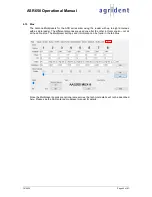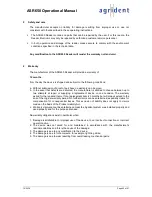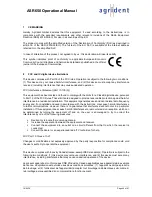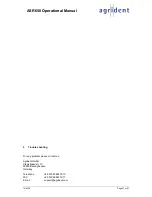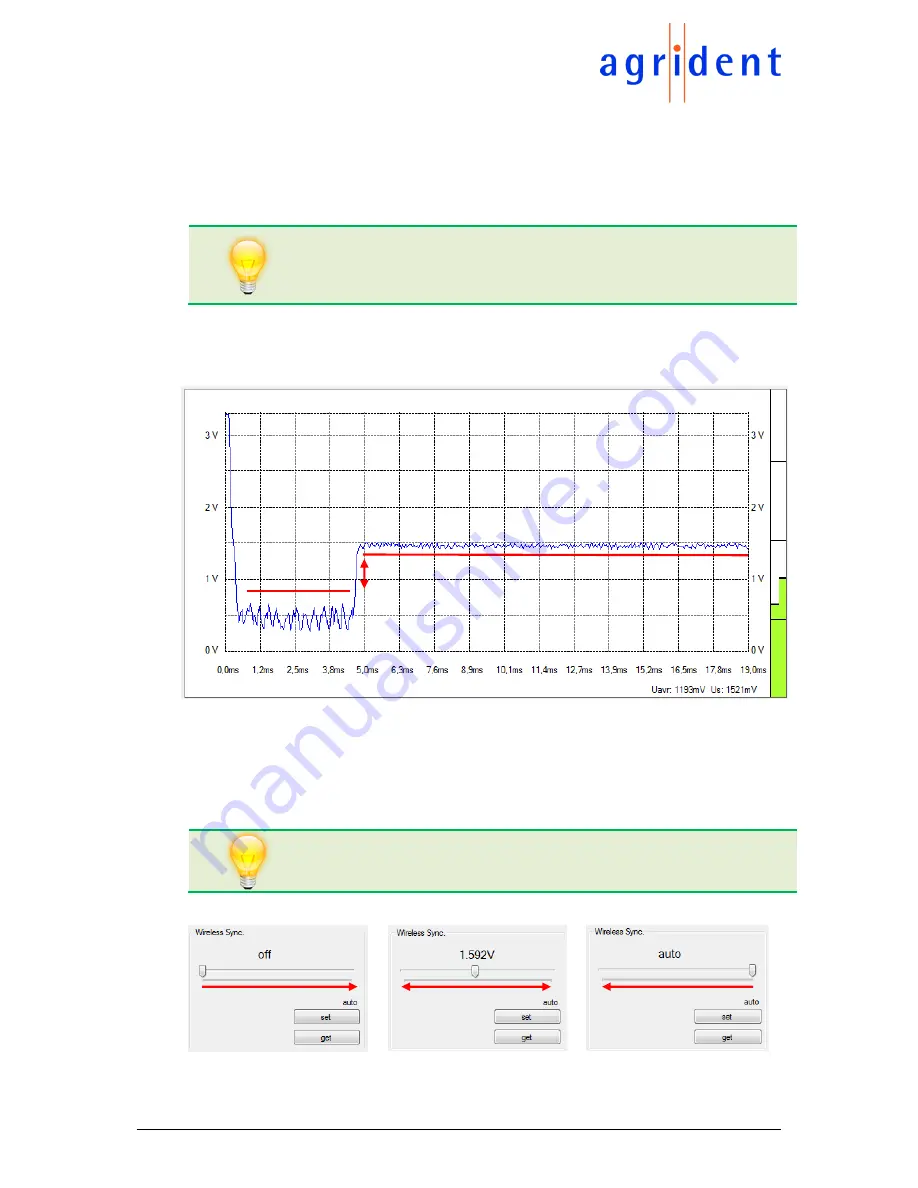
19/09/18
Page 60 of 67
ASR650 Operational Manual
What the ASR requires in order to make the correct decision is a particular Sync. Level. The level
needs to be set higher than the highest peak in the ‘background noise’. So, in our example it
would be okay to set the Sync. Level to approximately 1V. You might also set it higher but then
you decrease the sensitivity of Wireless Sync. A level of about 3 Volts would make no sense at
all since the ‘other’ reader does not pass 3 Volts.
If you want to select a Sync level manually, your value should always be only
a bit higher than the maximum background noise. This ensures that the ASR
will also synchronize to readers which are further apart. The Sync. Level is
comparable with the
‘Trigger Level’ of an oscilloscope.
In the next example the ‘other’ reader seems to be further apart because the signal rise in the
RSSI is smaller.
If you would select a Sync. Level of 1.5 Volts or even higher in this case, Wireless Sync. would
never work because the signal, caused by the other reader, never reaches 1.5 Volts.
Fortunately, the ASR also offers an automatic Sync. Level detection which works really reliable.
In this case the reader always evaluates the changes in the background noise and tries to set the
lowest possible Sync. Level on its own.
If you do not know exactly what you are doing with the manual configuration,
it is highly recommended to use the automatic Sync. Level detection in order
to avoid unnecessary malfunction of the Sync. mechanism.
Use the slide control for selecting a Sync. Level and press
‘
set
’ in order to send the setting to the
reader. You can request the currently configured level via
‘
get
’.



















